
Scotland's Mountain Ridges by Dan Bailey
Cicerone Press, 256 pages, full-colour, card cover, £17:95
Walks and Scrambles in Norway by Anthony Dyer, John Baddeley and Ian H Robinson
Ripping Yarns Publishing, full-colour, hard back, 305 pages £24:95
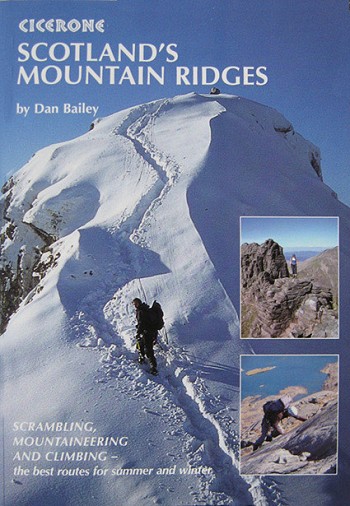
I was intrigued to receive these two volumes through the post to review and it struck me fairly early on that these books have a lot of similarities including being of a substantial size and full-colour throughout. Perhaps the main similarity is the fact that they are guides to mountainous areas that make an attempt cross the perceived lines between walking, scrambling and rock climbing guide books. Before going in any further lets make it clear, although described as guidebooks - which they most definitely are - they are not ones you are likely to want to carry in your rucksack due to their considerable weight. Using them when backpacking through Rondane or to find you way up Mitre Ridge simply isn't going to happen! They will doubtless both be used at home to plan and inspire, which surely is as important a job for any guide book as taking your hand and leading you to and through the promised land! Overall both are well written and have managed to avoid the common pitfall of turning great outings into turgid "turn left at the phone box" narratives.
In more detail, lets start with the Scottish volume first then; this hangs a series of outings together under the broad heading of "ridges", with a variety of trips from such non-technical ambles as the circuit of Ben Lui, through to standard scrambling territory like the Aonach Eagach ridge. It progresses on to routes that cross over into proper rock climbing like the North East Buttress (VDiff) on Ben Nevis and all the way up to include some classic rock climbs; Eagle Ridge on Lochnagar (Severe) and South Ridge Direct (VS) on Arran's Cir Mhor being prime examples.
The routes described are arranged in logical fashion from the south - starting with Arran, all the way through to the North West Highlands (Stac Pollaidh and Suilven) before looping round to finish with a quick tour of the choice scrambles from Skye and Rhum. It could be argued that large sections of the guide are filled with rather predictable outings, but have no doubt these are all classic days on the hill, and celebrating them is always to be praised. For me the inclusion of the rock climbs helps lift the book beyond the mundane, and lets face it there has always been a continuum; most climbers enjoy a good days scrambling in the hills and many walkers aspire to travel rocky ridges and reach the more exposed and inaccessible areas of our mountains - there is something in this book for most hill-folk.
Ordinance Survey 1:50,000 maps have been used throughout (though for Skye the 1:25,000 is recommended as being more appropriate) and these lend an authoritative air to the whole volume. The maps are blended very effectively with the text and photographs and really add to its feel; the whole package is well designed and inspiring.
The photographs themselves merit special mention, a superb set of shots of the Scottish mountains in all their various moods; its nice to see that there there are plenty of pictures of people in wet-weather-gear, and low scudding clouds, and these are intersperse with sparkling winter scenes plastered with snow and high summer shots when the peaks shimmer though the heat haze. There are a few of the pictures that could have done with a judicious bit of Photoshop work to lift them, especially the small number that are underexposed, but overall the collection makes the book into a superb celebration of the Scottish mountains.

As for the Norwegian volume; the task involved in producing this book has got have been at least an order of magnitude more difficult than the Scottish guide, with the remoteness of the areas and scale of the mountains being major obstacles - there it little prospect of nipping over to Glittertind for example, if there is a good forecast for the weekend! Despite the scale of the task, the guide boldly sets out to describe a huge sweep of outings all the way from the Telemark area in south-east Norway, through the major high mountains and snow fields of the west coast, on up to Lofoten and then northwards all the way to Troms, and on to far-flung Lyngen, over a thousand miles from the starting place. Without a doubt this is a major work, especially when you consider that some of the longer tours take up to a week to complete. In fact there is a marked lack of easier outings in the book, though I suspect that is more to do with the nature of the terrain - there are not many of those soft Alpine cable cars here, or even much in the way of high level roads over large expanses of the country. With that being the case, round trips of 20+ km and days ascents of in excess of 1500m are not unusual - you best make sure you are fit before you book the ferry! Interestingly the book covers the whole gamut from single day trips up easy peaks, to hut-to-hut walks, back-packing outings, ski-tours and even some challenging semi-Alpine style peaks – the variety available is breathtaking.
One hundred and thirty years after Slingsby's initial explorations of this wild and wonderful land, Norway remains one of the last great secrets in Europe mountaineering, and this book will open up large areas to a new audience, though despite there being 53 outings described, it only scratches the surface of the mountains of the land of the North Men.
The biggest let down with the book has got to be the quality of the printing of the colour photographs, I am not sure if its the matt paper or some other problem with the reproduction, but a large number of the action and scenic shots are dull, flat, and rather muddy. This is a great pity because the light in the Norwegian mountains, and especially up in the Arctic has a rare quality which the pictures have failed to capture – a simple comparison with the Scottish Scrambles book shows what can be done. Another minor gripe (and it is only minor), on the longer tours I would have like to see the individual days broken down in the text, its slightly annoying having to keep referring back to the introduction to the chapter to find out if it is a route-march of 25 km with 1200m of ascent or an 8 km amble on the flat that is being described. Mini-headings would have managed this and broken up the solid blocks of text effectively; in fact a bit of design input might have freshened the look of the book as it does manage to feel a bit dated.
Despite these minor minus points, this is a great book and I would defy any climber or walker worthy of the title to flick though the pictures and not be inspired by view after view of unknown peaks stretching away for ever. We are headed back to Norway again this summer and this volume will be in the book-box - have no doubts!
In summary, both of these books are works of considerable authority, I can recommend them unreservedly. Whether you want a gentle introduction to the Scottish hills, or fancy planning a month long expedition to Arctic Norway, or more likely something in between, these books should offer plenty of choice. On the other-hand if you are simple after a bit of inspiration, there is no doubt they can deliver that by the shed-load.
More information on the books -
The competition to win copies of these books has now closed. We will be announcing the results shortly.

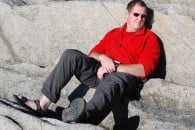


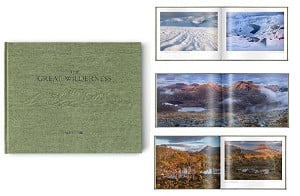
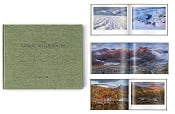
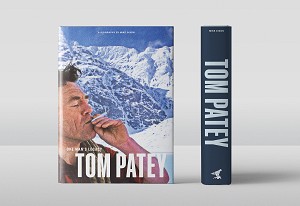


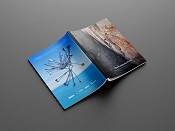
Comments